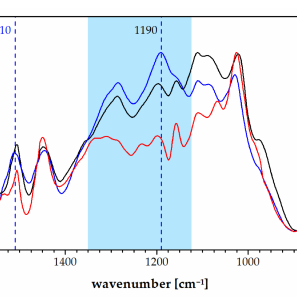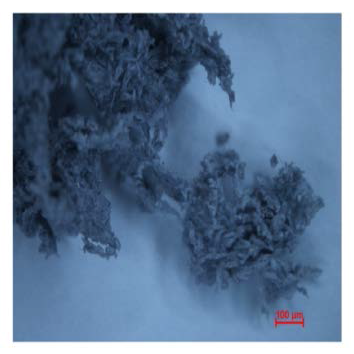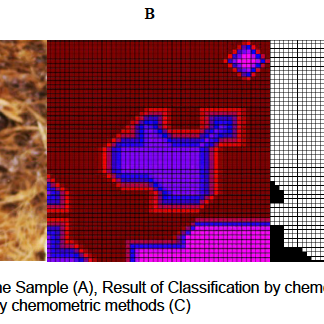Application of foam production techniques on laboratory scale
The increasing social awareness to sustainability reinforces the necessity for the industry to develop eco-friendly and sustainable materials to decrease the environmental impact of their products. An example for an environmentally friendly substitute are tannin-based foams, which are a very promising green alternative to commonly used oil-derived materials for foam production. Sometimes, their material properties have been not documented in detail yet. However, it is necessary to characterize the materials for the development of new materials and/or products.
[Ref: Sepperer T, Neubauer J, Eckardt, J, Schnabel T, Petutschnigg A, Tondi G (2019) Pollutant absorption as a possible end-of-life solution for polyphenolic polymers. Polymers 11:911, doi:10.3390/polym11050911]
Different tannin-based foams and a possible application of pollutant absorption
FT-IR sectra of different samples
THE LAB
SALZBURG UNIVERSITY OF APPLIED SCIENCES – Forest Products Technology & Timber Constructions Dep.
Salzburg University of Applied Sciences participates to InCIMa4 projects with three laboratories dedicated on techniques for processing and analysing of natural raw materials (e.g. wood, straw, bark, etc).
Application of Raman Spectroscopy in the study of wood- based panels
Increasing problems with raw material supply for wood-based panels has triggered recent developments to diversify material supply. Regarding the recovery of waste materials and the performance of wood panels concerning fire resistance and mechanical properties, wet blue leather shavings have been considered a useful material combination. These shavings are a byproduct of the leather preparation process. In Europe around 0.2 million tons per year are generated when tanned hides are trimmed to its final thickness. The objective of the experiments was to investigate the distribution of materials in fiberboards made from wood fibers and wet blue leather shavings. As the mixture of materials is important, it was possible to determine the distribution of materials in the fiberboards by Raman spectroscopy. The information obtained by Raman spectroscopy shows a possible approach for a detailed distribution analysis in the wood-based panels industry. The measurements indicated that it is possible to reliably describe the heterogeneity of wood-leather panels for distinguishing the leather and non-leather area. Raman spectrum of leather offers the most distinctive Raman fingerprint to describe the heterogeneity of wood-leather panels.
[Ref: T. Grünewald, S. Ostrowski, A. Petutschnigg, M. Musso, and S. Wieland, – Structural Analysis of Wood-Leather Panels by Raman Spectroscopy BioResources 7 (2), 1431-1439 (2012)]
Wood based panels
Wet Blue Leather
Mapping of the components of the sample analysed, leather is visible in blue (B) and black (C)
THE LAB
UNIVERSITY OF SALZBURG – Department of Chemistry and Physics of Materials
RAMAN SPECTROSCOPY LAB
Raman spectroscopy is a non-destructive vibrational spectroscopic method based on the interaction of light with the electron shell.





